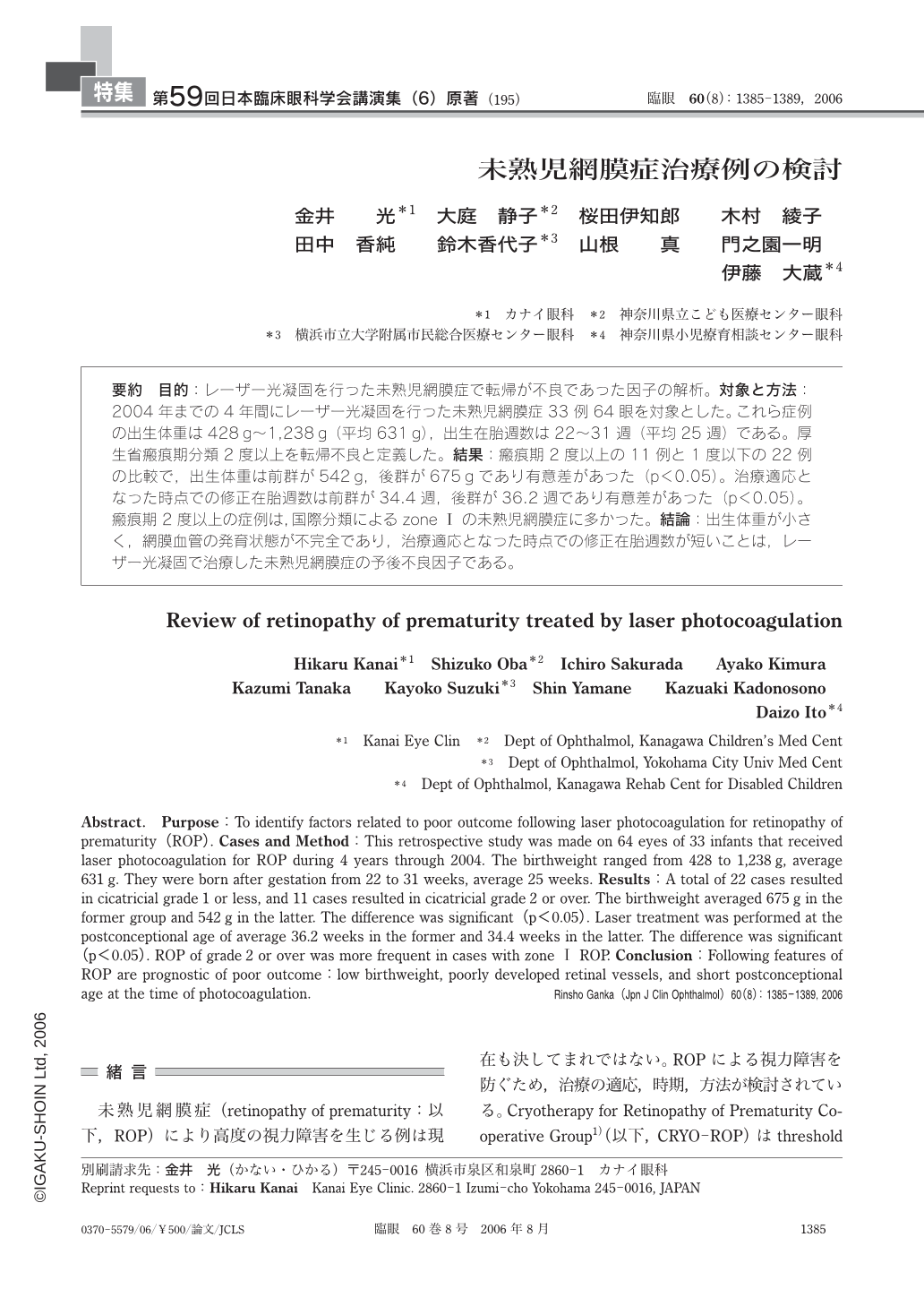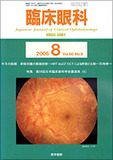Japanese
English
- 有料閲覧
- Abstract 文献概要
- 1ページ目 Look Inside
- 参考文献 Reference
目的:レーザー光凝固を行った未熟児網膜症で転帰が不良であった因子の解析。対象と方法:2004年までの4年間にレーザー光凝固を行った未熟児網膜症33例64眼を対象とした。これら症例の出生体重は428g~1,238g(平均631g),出生在胎週数は22~31週(平均25週)である。厚生省瘢痕期分類2度以上を転帰不良と定義した。結果:瘢痕期2度以上の11例と1度以下の22例の比較で,出生体重は前群が542g,後群が675gであり有意差があった(p<0.05)。治療適応となった時点での修正在胎週数は前群が34.4週,後群が36.2週であり有意差があった(p<0.05)。瘢痕期2度以上の症例は,国際分類によるzone Ⅰの未熟児網膜症に多かった。結論:出生体重が小さく,網膜血管の発育状態が不完全であり,治療適応となった時点での修正在胎週数が短いことは,レーザー光凝固で治療した未熟児網膜症の予後不良因子である。
Purpose:To identify factors related to poor outcome following laser photocoagulation for retinopathy of prematurity(ROP). Cases and Method:This retrospective study was made on 64 eyes of 33 infants that received laser photocoagulation for ROP during 4 years through 2004. The birthweight ranged from 428 to 1,238g, average631g. They were born after gestation from 22 to 31 weeks, average 25 weeks. Results:A total of 22 cases resulted in cicatricial grade 1 or less, and 11 cases resulted in cicatricial grade 2 or over. The birthweight averaged 675g in the former group and 542g in the latter. The difference was significant(p<0.05). Laser treatment was performed at the postconceptional age of average 36.2 weeks in the former and 34.4 weeks in the latter. The difference was significant(p<0.05). ROP of grade 2 or over was more frequent in cases with zone Ⅰ ROP. Conclusion:Following features of ROP are prognostic of poor outcome:low birthweight, poorly developed retinal vessels, and short postconceptional age at the time of photocoagulation.
Rinsho Ganka(Jpn J Clin Ophthalmol)60(8):1385-1389, 2006

Copyright © 2006, Igaku-Shoin Ltd. All rights reserved.


